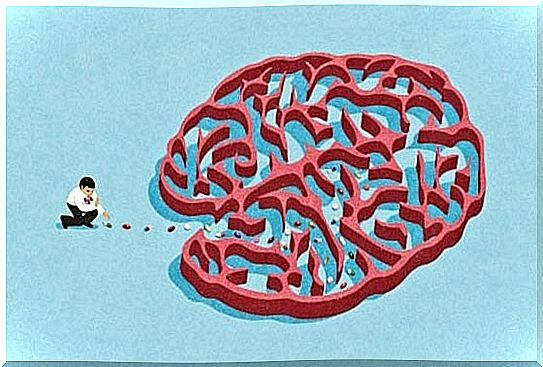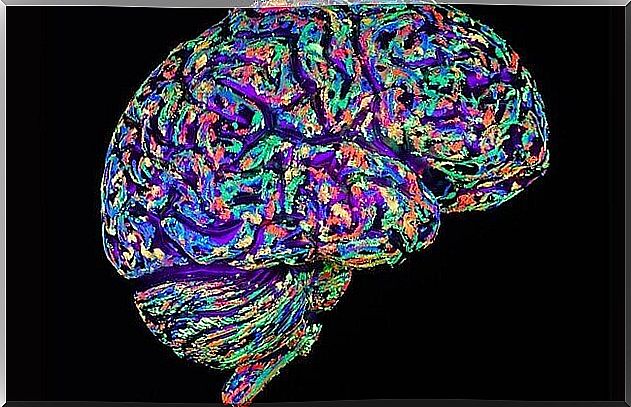The Use And Effect Of Diazepam
Diazepam (better known as its trade name “Valium”) is a drug that belongs to the family of anxiolytics and sedatives.
Today, this type of psychotropic drug, derived from benzodiazepines, is still one of the most prescribed treatments for anxiety, insomnia and panic attacks. It is also used as a sedative before certain types of surgeries.
But what exactly is the effect of diazepam?
We’re all heard of diazepam. We may have been prescribed it at some point, or have a family member or other loved one who has it on the bedside table as usual.
The WHO (World Health Organization) has included it in the list of “essential medicines”. Why? It is one of the most effective standard benzodiazepines in use.
But, and this is important to keep in mind, its frequent and almost common use in many situations does not mean that it is in any way a harmless drug.
Diazepam, like the rest of benzodiazepines, has a high risk of addiction. The use of this medicine must be sporadic, controlled and short-lived.
Read on and find out more about this type of psychotropic drug.

What is diazepam?
Pål has recently had a number of ups and downs. He feels that everything is going wrong, and the world is going too fast for his liking.
Two months ago, his father died of heart problems. After that, one can also add that the company he works for, lays off employees and he feels that productivity decreases. He’s worried he’s the next in line to get fired.
His anxiety levels, sleep problems and nervous tension are so strong that his doctor has prescribed him diazepam.
The treatment lasts for 8 weeks. They will then evaluate his progress and then gradually reduce the prescription amount to zero. If Pål does not see any improvement, the doctor will refer him to a psychiatrist to try other treatments and then start other types of therapy.
He agrees with this course of action and starts the treatment, but first he tries to find out a little more about this little pill that will be his companion in the coming weeks.
Who created diazepam?
Diazepam was the second benzodiazepine created by Leo Sternbach around the 1960s. It is five times stronger than its predecessor, chlordiazepoxide. Until then, doctors wrote prescriptions for the classic barbiturate pills , which were very addictive drugs with quite serious side effects.
Diazapam was considered a “miracle drug” for a few years, and became the best-selling drug during that time. However, doctors eventually realized that these wonderful pills were not as innocent as originally thought. In fact, marketing was halved in the 1990s.

What is diazepam used for?
Diazepam, given its sedative and sleep-inducing effects, has several uses:
- Short-term treatment of insomnia.
- Treatment of anxiety, panic attacks and conditions of agitation.
- Treatment of epileptic conditions.
- First treatment for various mood disorders as a way. It is usually used in conjunction with lithium, valproate or antipsychotics.
- Treatment of withdrawal from alcohol and opiates.
- In combination with other antidepressants in patients with suicidal ideation.
- Effective against several painful muscle conditions.
- Used to treat various muscle paralysis due to injuries or brain problems.
- In outpatient clinics or hospitals, it can be used as a sedative before an operation.
How does diazepam work?
Diazepam is basically a drug that acts as a sedative for the nervous system. What does this mean? Like it or not, valium, like all other benzodiazepines, reduces brain activity.
It does this by acting in different areas of the limbic system , thalamus and hypothalamus , thus inducing anti-anxiety effects.
Brain researchers claim that the action starts when it reaches the GABA receptors . After that, the function of certain areas of the brain is reduced to experience a prolonged state of drowsiness, reduced anxiety and muscle relaxation.

Side effects of diazepam
We pointed out at the beginning that the treatment should be short-lived and supervised by a doctor. It should not exceed 8-12 weeks and should never exceed the prescribed doses.
The consequences can be serious if we take them longer or if we exceed the recommended dose. We should also never combine diazepam with other medicines of our choice.
Let us now look at the side effects of diazepam, which are the same as those of most benzodiazepines.
More common side effects of diazepam
- Drowsiness.
- Disabled engine function.
- Coordination problems.
- Balance problems.
- Dizziness.
- Dry mouth.
- Memory loss.
Weak side effects of diazepam
- Tremor and other coordination problems
- Nervousness, irritability.
- Insomnia.
- Headache.
- Muscle spasms.
- Problems driving safely.
- Difficulty speaking coherently.
- Difficulty concentrating.
- Amnesia.
Serious side effects of diazepam
- Tachycardia.
- Paradoxical states of consciousness.
- Irregular breathing, either fast or slow.
- Lack of coordination.
- Loss of consciousness.
- Muscle weakness.
- Extreme drowsiness.
- Muscle pain.
- Blue fingernails due to lack of oxygen in the blood.

To conclude, it is clear that a good number of people on this drug due to anxiety usually take diazepam over extended periods of time, which often leads to addiction and tolerance. This means that we gradually need higher and higher doses to achieve the same effect, and this strains our health.
Psychotropic drugs, although legal in many cases, are not always an answer or the right solution to our anxiety or depression. Chemicals can numb, relax and reduce our worries, but they will not solve our problems.
It’s like using crutches when you’ve been shot in the leg: the crutches let you go, but when you put them down you will not be able to continue unless you have no other aids.
To use this analogy, by all means use the crutches, but let’s concentrate on the operation (the psychological treatment) first. Let us allow room for the psychological approach and prevent our bodies and our health from becoming dependent on drugs to live.
Bibliography
– Andrés-Trelles, F. (1993) Drugs used in anxiety: benzodiazepines and other anxiolytics. Madrid: MacGraw Hill Interamericana.
-Hardman JG, Goodman LS, Gilman A. (1996) Pharmacological bases of therapeutic agents. Vol. I. pp. 385-398. Madrid: MacGraw-Hill Interamericana.
-Robert Whitaker, (2015) Anatomy of an Epidemic, Madrid: Captain Swing
-Sophie Billioti, Yola Moride, Thierry Ducruet (9-09-2014) Benzodiazepine use and risk of Alzheimer’s disease: case-control study British Medical Journal, 349, pp. 205-206









